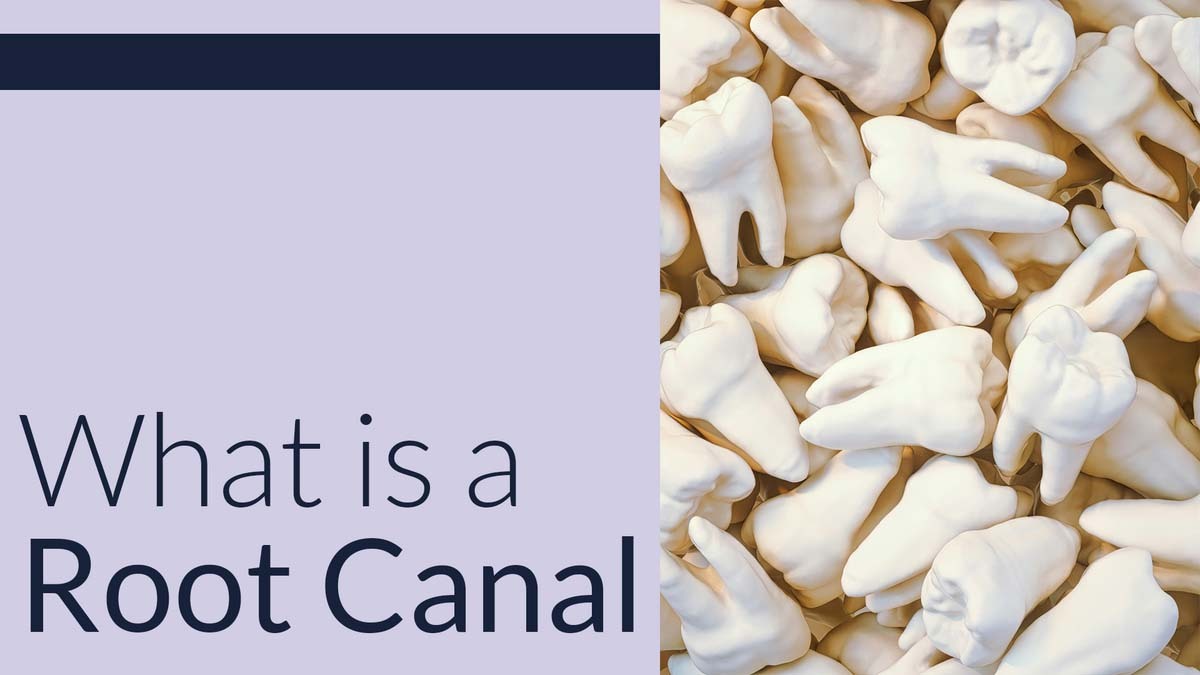What is a Root Canal?

Root canals are some of the most common dental procedures out there. However, many people do not know what takes place during these procedures. This can lead to fear and misunderstandings that can complicate dental care. |
A root canal treatment is a procedure where your dentist removes inflamed or infected dental pulp on the inside of your teeth. They then gently clean and disinfect the area and finish by filling and sealing the space. Root canals are very common procedures and dentists perform millions across the United States each year. They are minimally invasive and can prevent a lot of pain down the line, and they can even save you from losing your teeth.
In this post, we will answer all your questions about root canals, including what happens during the root canal procedure, how you might know if you need a root canal, and more.
.png)
How Do Root Canals Help?
A root canal is a dental procedure commonly performed to treat an infected or damaged tooth. It involves removing the infected or damaged pulp from the interior of the tooth, cleaning and disinfecting the root canals, and then filling and sealing them. This procedure is necessary when the pulp, which contains blood vessels, nerves, and connective tissues, becomes infected or inflamed due to deep decay, trauma, or a cracked tooth.
If left untreated, an infected root canal can lead to severe pain, abscesses, or even tooth loss. A root canal aims to save the natural tooth and alleviate the associated pain and inflammation, allowing the patient to maintain proper dental function and aesthetics. The process typically requires one or more appointments with a dentist or endodontist, who specializes in root canal treatment.
Although the procedure may be associated with some discomfort, advancements in dental technology and anesthesia have made it a common and successful intervention for preserving a healthy smile. Many patients report minimal discomfort both during and after the procedure.
In the next section, we will discuss the step-by-step process of what happens during a root canal.
.png)
What Happens During a Root Canal Procedure?
A root canal procedure is a treatment performed by a dentist to save a tooth that has been severely damaged or infected due to decay or injury. The process typically involves several steps and the use of local anesthesia to ensure the patient's comfort.
1. Local Anesthetic: The dentist begins by numbing the area around the affected tooth using a local anesthetic. This ensures that the patient does not feel any pain during the procedure.
2. Creating Access: Once the area is numb, the dentist creates a small opening in the crown of the tooth to access the infected pulp chamber and root canals.
3. Infected Pulp Removal: Using specialized tools, the dentist carefully removes the infected or damaged pulp from the tooth's pulp chamber and canals. This helps eliminate the source of infection and prevents it from spreading further.
4. Cleaning and Disinfecting Canals: The dentist then thoroughly cleans and disinfects the canals using irrigation solutions and small instruments. This step helps remove any remaining infected tissue and bacteria.
5. Gutta Percha: After the canals are clean and dry, the dentist seals them by placing a rubbery material called gutta percha into each canal. This material helps prevent reinfection and strengthens the tooth's structure.
6. Final Restoration: In most cases, a tooth that has undergone a root canal procedure requires additional restoration. This can involve placing a filling or a crown over the treated tooth to protect it and restore its function and appearance.
A root canal procedure involves using local anesthesia, removing the infected pulp, cleaning and disinfecting the canals, sealing them with gutta percha, and finally restoring the tooth with a filling or crown. This process allows the patient to retain their natural teeth and alleviate the pain and discomfort associated with infection or damage.
How do I Know if I Need a Root Canal?
If you experience any of the following signs and symptoms, it may indicate the need for a root canal procedure.
Severe toothache is one common indication, often characterized by intense and persistent pain that may worsen when you bite down or apply pressure to the tooth. Prolonged sensitivity to hot or cold temperatures is another telltale sign, as the nerve inside the tooth becomes irritated and overly sensitive. Discoloration of the tooth is also a possible indication, as the pulp inside the tooth becomes infected or inflamed, causing the tooth to become noticeably darker or blackened.
Gum swelling and tenderness are additional signs that may necessitate endodontic treatment. When the pulp becomes infected, the infection may spread to the surrounding tissues, causing the gums to become swollen, red, and tender to the touch. Lastly, the presence of persistent pimples on the gums may indicate the need for a root canal. These pimple-like bumps, called fistulas, form as the infected pulp attempts to drain itself. If these signs and symptoms are present, it is crucial to visit a dentist for an evaluation. Prompt root canal treatment can alleviate pain, prevent further infection, and save the affected tooth.
Root Canals with Kings Dental
Root canals are an extremely common dental procedure that many people need to relieve their pain and potentially save their tooth. This procedure uses state-of-the-art technology to reduce discomfort, and the recovery time is often as little as a few hours.
If you are experiencing tooth pain and believe that you may need a root canal, Kings Dental is here to help. We have the best team of dentists in Cincinnati and our office offers walk in appointments so you can get your oral health addressed sooner rather than later.
Click here to schedule an appointment with Kings Dental today!
Follow Kings Dental on Facebook for more information on your oral health!

